This page gives a short overview of a few selected projects, in which I was involved. They are mostly research projects that were developed in cooperation with other people. See the referenced publications for more information.

Toxicity and Harassment in Online Environments
Several projects relate to toxicity and harassment in online environments and multiplayer games. Despite wide agreement about the dangers of toxicity, it remains a problem for game communities. In my projects, I aim to contribute to combatting toxicity and harassment by helping understand toxicity and implementing techniques, such as assessment methods that can predict if social interactions are good or bad.
Nicole A. Beres, Julian Frommel, Elizabeth Reid, Regan L. Mandryk, and Madison Klarkowski. Don’t You Know That You’re Toxic: Perceptions of Toxicity in Online Gaming. CHI ’21. DOI. Presentation Video. Teaser
Julian Frommel, Valentin Sagl, Ansgar E. Depping, Colby Johanson, Matthew K. Miller, and Regan L. Mandryk. Recognizing Affiliation: Using Behavioural Traces to Predict the Quality of Social Interactions in Online Games. CHI ’20. DOI. Teaser
Julian Frommel, Regan L. Mandryk, and Madison Klarkowski. Challenges to Combating Toxicity and Harassment in Multiplayer Games: Involving HCI Games Research. To appear in CHI PLAY Extended Abstracts. 2022. DOI
Elizabeth Reid, Regan L. Mandryk, Nicole A. Beres, Madison Klarkowski and Julian Frommel. Feeling Good and In Control: In-game Tools to Support Targets of Toxicity. To appear in Proc. ACM Hum.-Comput. Interact., CHI PLAY. 2022. DOI
Elizabeth Reid, Regan L. Mandryk, Nicole A. Beres, Madison Klarkowski and Julian Frommel. “Bad Vibrations”: Sensing Toxicity From In-Game Audio Features. IEEE Transactions on Games. 2022. DOI. IEEE Spectrum article about the paper
Image: Harassment by OCHA Visual from the Noun Project. Public Domain
Digital Biomarkers for User State and (Mental) Health
In multiple projects, we developed and evaluated digital biomarkers for player traits or mental health. These have various applications, including the use for continuous assessment in treatment through mental health professionals.
Martin J Dechant, Robin Welsch, Julian Frommel, Regan L Mandryk. (Don’t) stand by me: How trait psychopathy and NPC emotion influence player perceptions, verbal responses, and movement behaviours in a gaming task. CHI ’22. DOI. Presentation Video. Video Preview
Martin J Dechant, Julian Frommel, Regan L Mandryk. Assessing social anxiety through digital biomarkers embedded in a gaming task. CHI ’21. DOI. Presentation Video. Teaser
Regan L Mandryk, Max V Birk, Sarah Vedress, Katelyn Wiley, Elizabeth Reid, Phaedra Berger, Julian Frommel. Remote Assessment of Depression Using Digital Biomarkers From Cognitive Tasks. Frontiers in Psychology. DOI
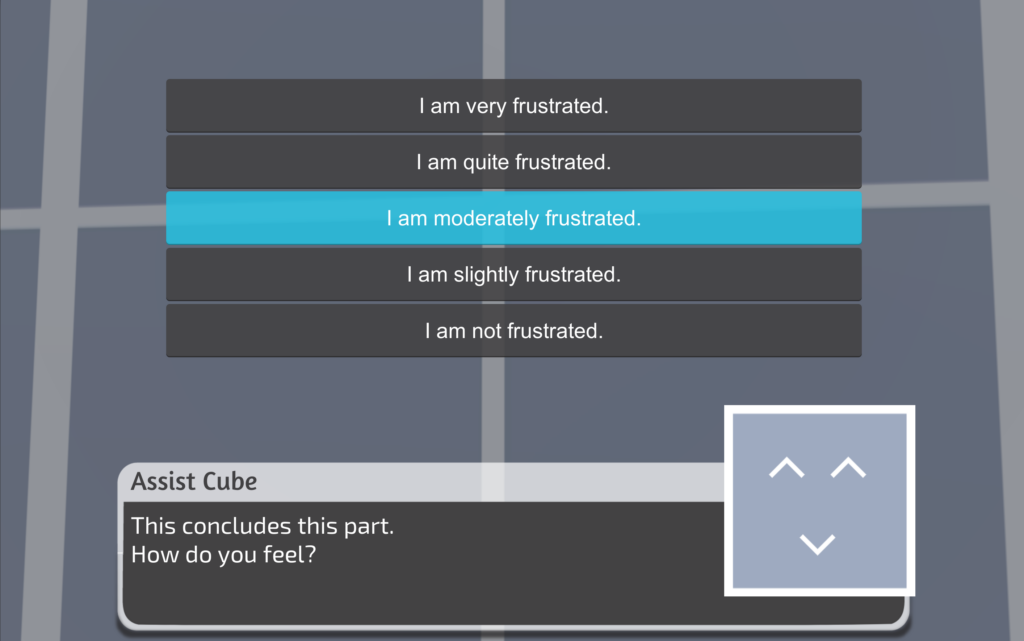
Non-player Questionnaires
We conducted a follow-up investigation of the effects of assessment through NPC dialogues. We implemented a 3D platformer featuring the Assist Cube, an in-game companion NPC.
Julian Frommel, Cody Phillips, and Regan L Mandryk. Gathering Self-Report Data in Games through NPC Dialogues: Effects on Data Quality, Data Quantity, Player Experience, and Information Intimacy. CHI ’21 DOI. Video Teaser
The Social Engineer
I was a co-supervisor in the development of Social Engineer, an educational VR game, aiming to raise awareness about social engineering. Developed by Fabian Fischbach, Daniel Hirschle, and Pascal Jansen. @The_SE_Game
Nominee “Nachwuchspreis: Bester Prototyp – Deutscher Computerspielpreis” (German videogame awards).
Audience choice award, Student Game Design Competition at CHI PLAY ’20.
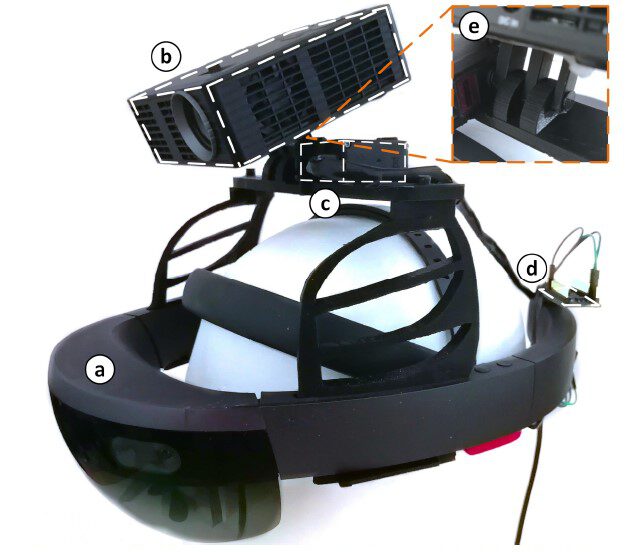
ShARe
We proposed and validated ShARe, a modified AR HMD combined with a projector that can display augmented content onto planar surfaces to include the outside users (non-HMD users).
Pascal Jansen, Fabian Fischbach, Jan Gugenheimer, Evgeny Stemasov, Julian Frommel, and Enrico Rukzio. Recognizing Affiliation: ShARe: Enabling Co-Located Asymmetric Multi-User Interaction for Augmented Reality Head-Mounted Displays. UIST ’20. DOI. Video Teaser
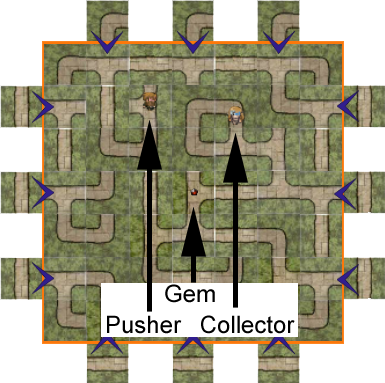
Affiliation Recognition in Online Multiplayer Games
We proposed and validated an approach to predict the players’ affiliation with their teammates based on features of their behaviour.
Julian Frommel, Valentin Sagl, Ansgar E. Depping, Colby Johanson, Matthew K. Miller, and Regan L. Mandryk. Recognizing Affiliation: Using Behavioural Traces to Predict the Quality of Social Interactions in Online Games. CHI ’20. DOI. Video Teaser
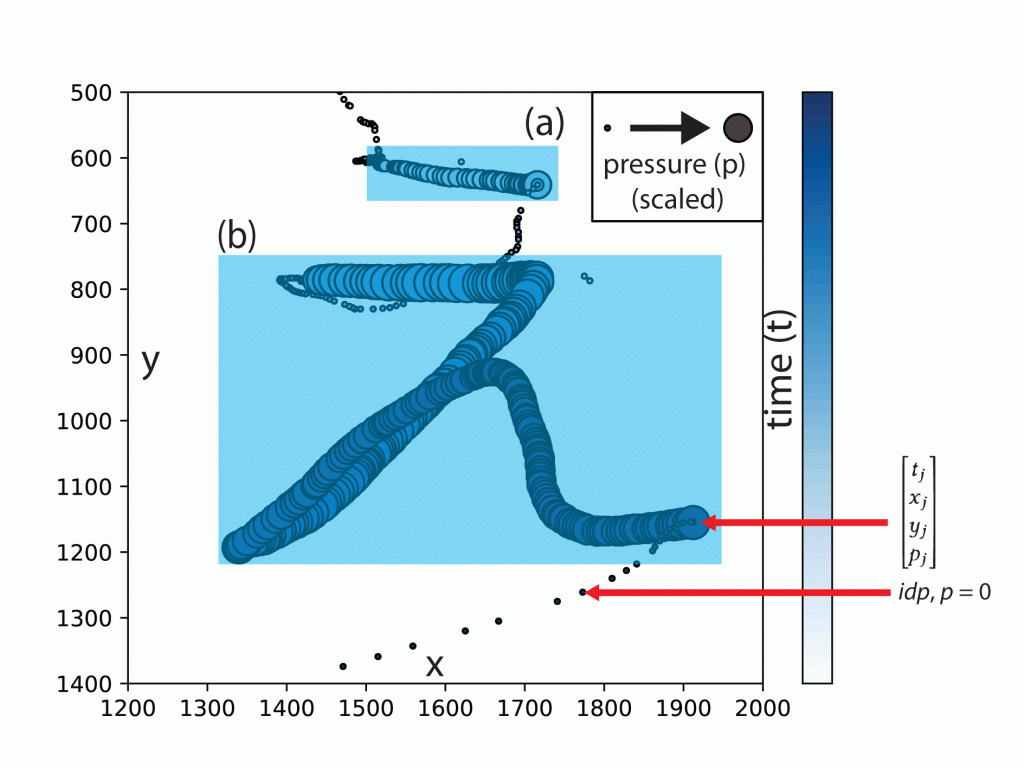
Emotion Recognition via Input and Performance Features
We proposed and validated an approach to assess players’ affective states (subjective valence, arousal, and dominance) through features of game input in combination with in-game performance.
Julian Frommel, Claudia Schrader, and Michael Weber. Towards Emotion-based Adaptive Games: Emotion Recognition Via Input and Performance Features. CHI PLAY ’18. DOI

Emotion-based Dynamic Difficulty Adjustment
We used player state assessment through NPC dialogues to assess frustration and boredom of players. This information was used as input to a flow-based model steering the difficulty of a game.
Julian Frommel, Fabian Fischbach, Katja Rogers, and Michael Weber. Emotion-based Dynamic Difficulty Adjustment Using Parameterized Difficulty and Self-Reports of Emotion. CHI PLAY ’18. DOI
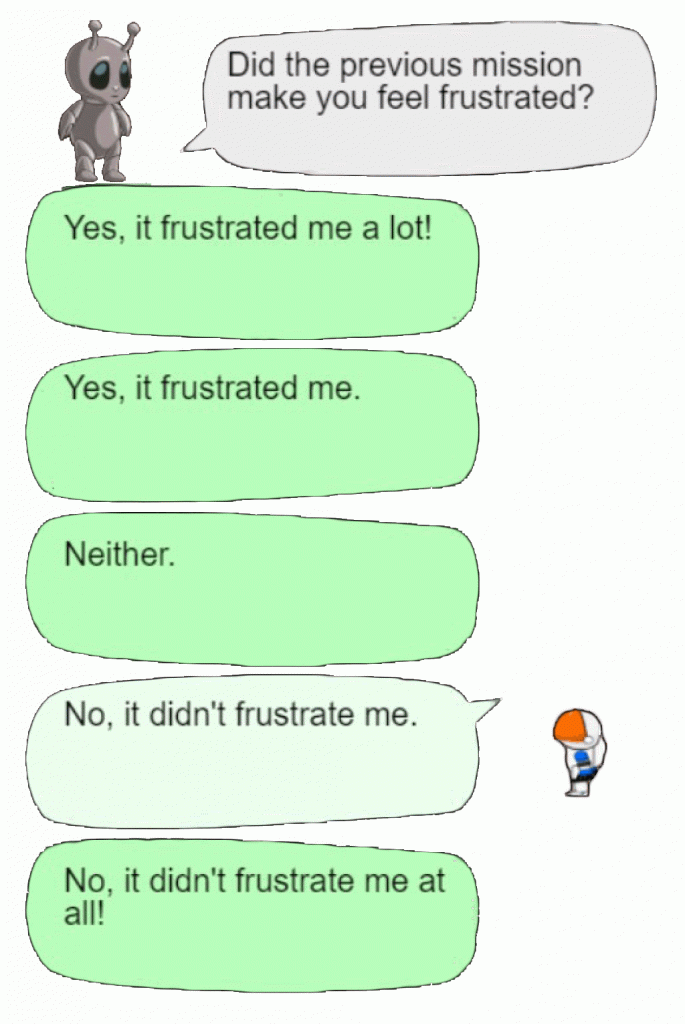
Integrating Questionnaires in NPC Dialogues
We expanded the concept of integrated questionnaires to dialogues with non-player characters. NPCs prompt players with questions representing Likert scale prompts, which are answered with regular game dialogue options.
Julian Frommel, Fabian Fischbach, Katja Rogers, and Michael Weber. Emotion-based Dynamic Difficulty Adjustment Using Parameterized Difficulty and Self-Reports of Emotion. CHI PLAY ’18. DOI

ShareVR
ShareVR is a proof-of-concept prototype using floor projection and mobile displays in combination with positional tracking to visualize the virtual world for the Non-HMD user, enabling them to interact with the HMD user and become part of the VR experience.
Jan Gugenheimer, Evgeny Stemasov, Julian Frommel, and Enrico Rukzio. ShareVR: Enabling Co-Located Experiences for Virtual Reality Between HMD and Non-HMD Users. CHI ’17. Best Paper Award. DOI, Video
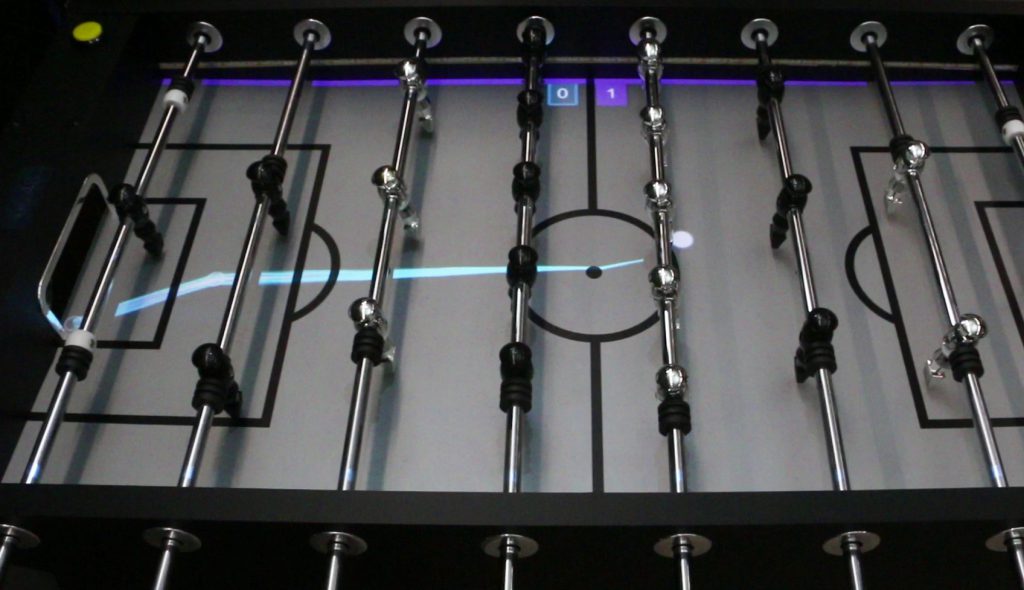
KickAR
KickAR is a digitally augmented foosball table. It has integrated tracking capabilities to keep score and visualize shots. Further, it uses different variants of game balancing such as providing an improved challenge for stronger players.
Katja Rogers, Mark Colley, David Lehr, Julian Frommel, Marcel Walch, Lennart E. Nacke, and Michael Weber. KickAR: Exploring Game Balancing Through Boosts and Handicaps in Augmented Reality Table Football. CHI ’18. DOI
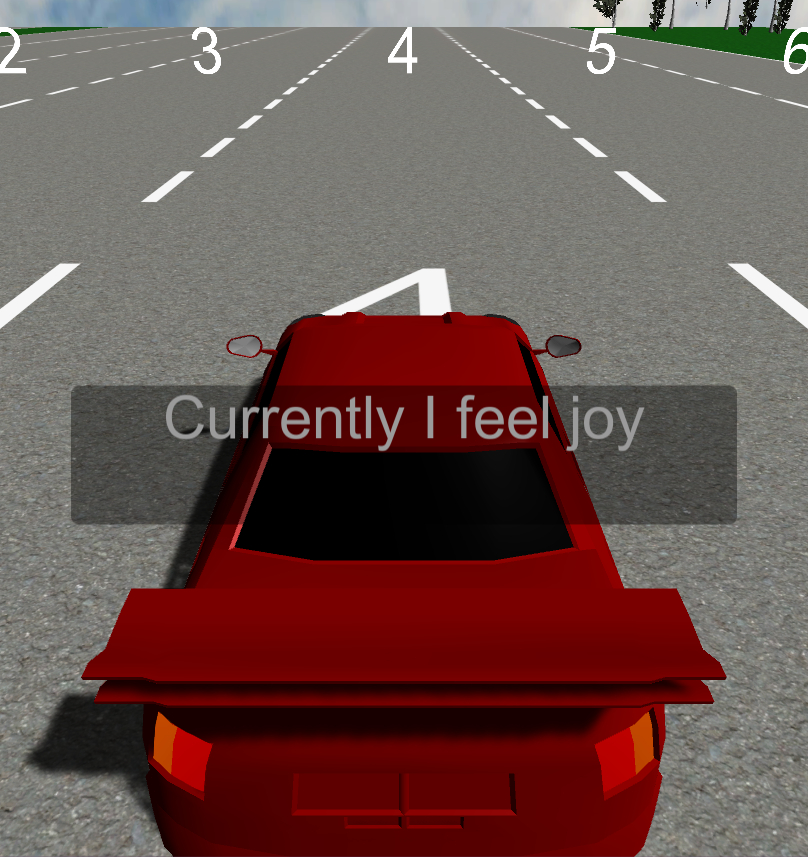
Integrating Questionnaires in Game Environments
We proposed and evaluated a concept for the integration of questionnaires in game environments. It aims to provide an unobtrusive, subjective assessment of player state that mitigates interruption effects.
Julian Frommel, Katja Rogers, Julia Brich, Daniel Besserer, Leonard Bradatsch, Isabel Ortinau, Ramona Schabenberger, Valentin Riemer, Claudia Schrader, and Michael Weber. 2015. Integrated Questionnaires: Maintaining Presence in Game Environments for Self-Reported Data Acquisition. CHI PLAY ’15. DOI
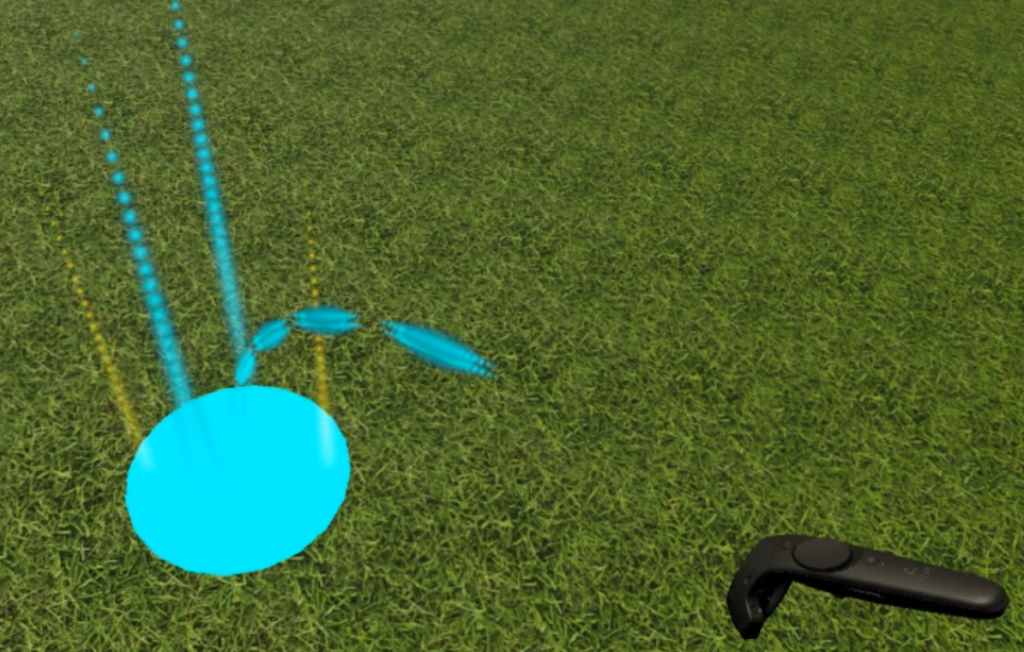
Effects of Controller-based Locomotion in VR
We investigated how players experience different locomotion methods in virtual reality. In particular, we investigated how they influence affective states, presence, and discomfort.
Julian Frommel, Sven Sonntag, and Michael Weber. Effects of Controller-based Locomotion on Player Experience in a Virtual Reality Exploration Game. FDG ’17. DOI
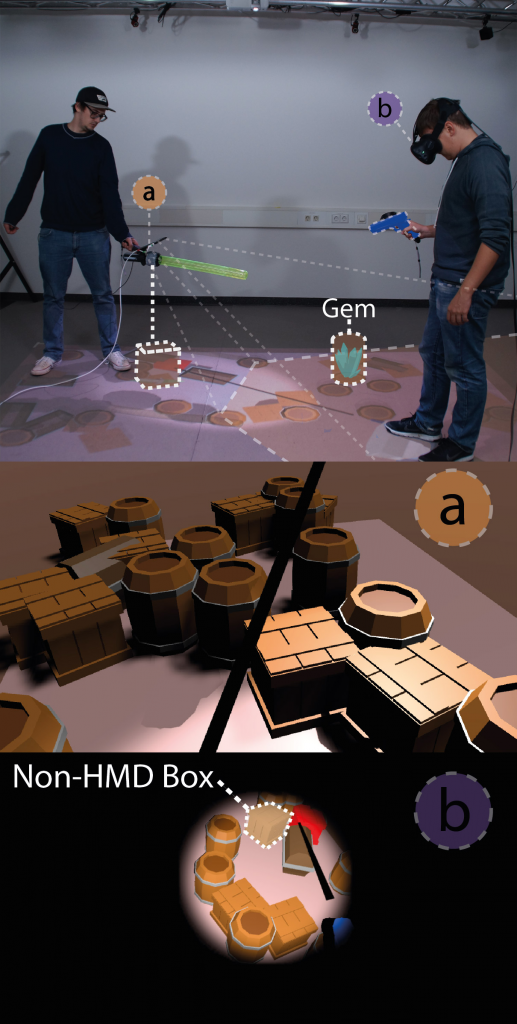
SneakyBoxes
SneakyBoxes is a competitive multiplayer VR game for co-located physical gameplay. One player has to look for a hidden game in a playing field full of chests, boxes, and barrels while not giving away their position. The other player has to find which box is controlled by the other player. We used this game as an experience showcasing the possibilities of ShareVR.
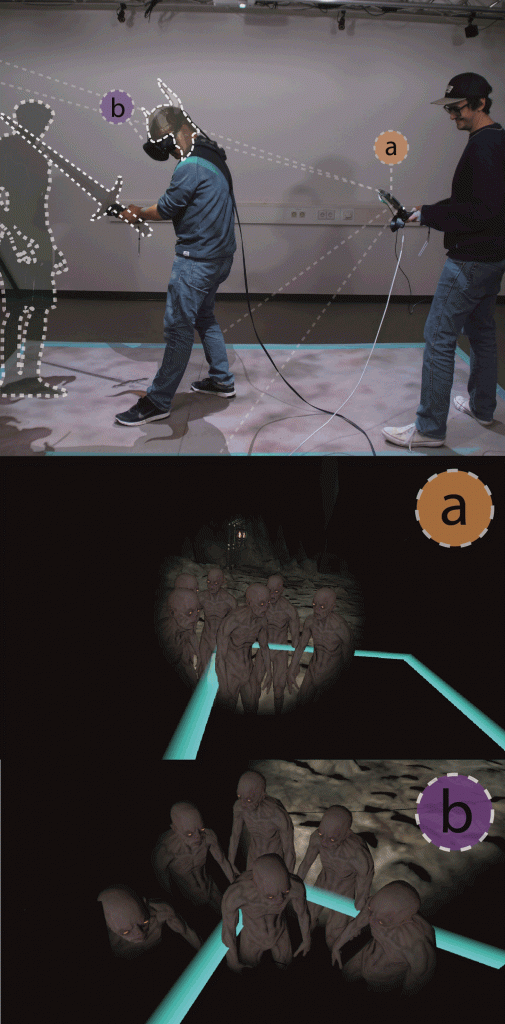
BeMyLight
BeMyLight explores cooperative gameplay in the co-located VR setting of ShareVR. On player plays an adventurer who explores a cave full of foes and riddles. The other player plays a magical fairy that accompanies them and provides light and assistance. They can only escape the cave by working together and helping each other with their complementary roles.
You can find more information about projects through my publications. You can also find some information about older projects on this page of the Institute of Media Informatics of Ulm University.